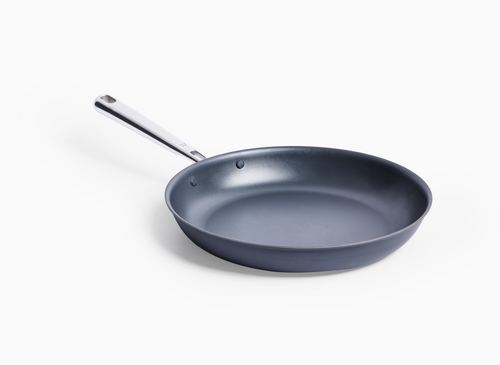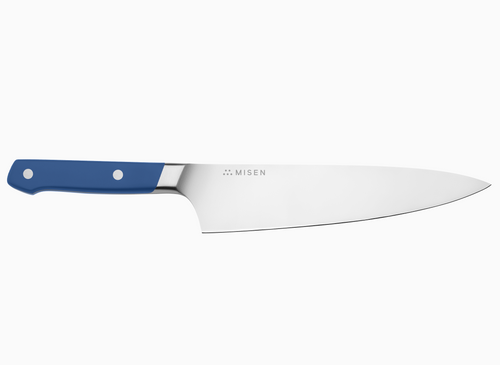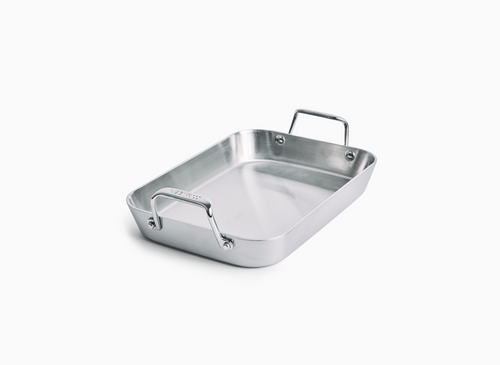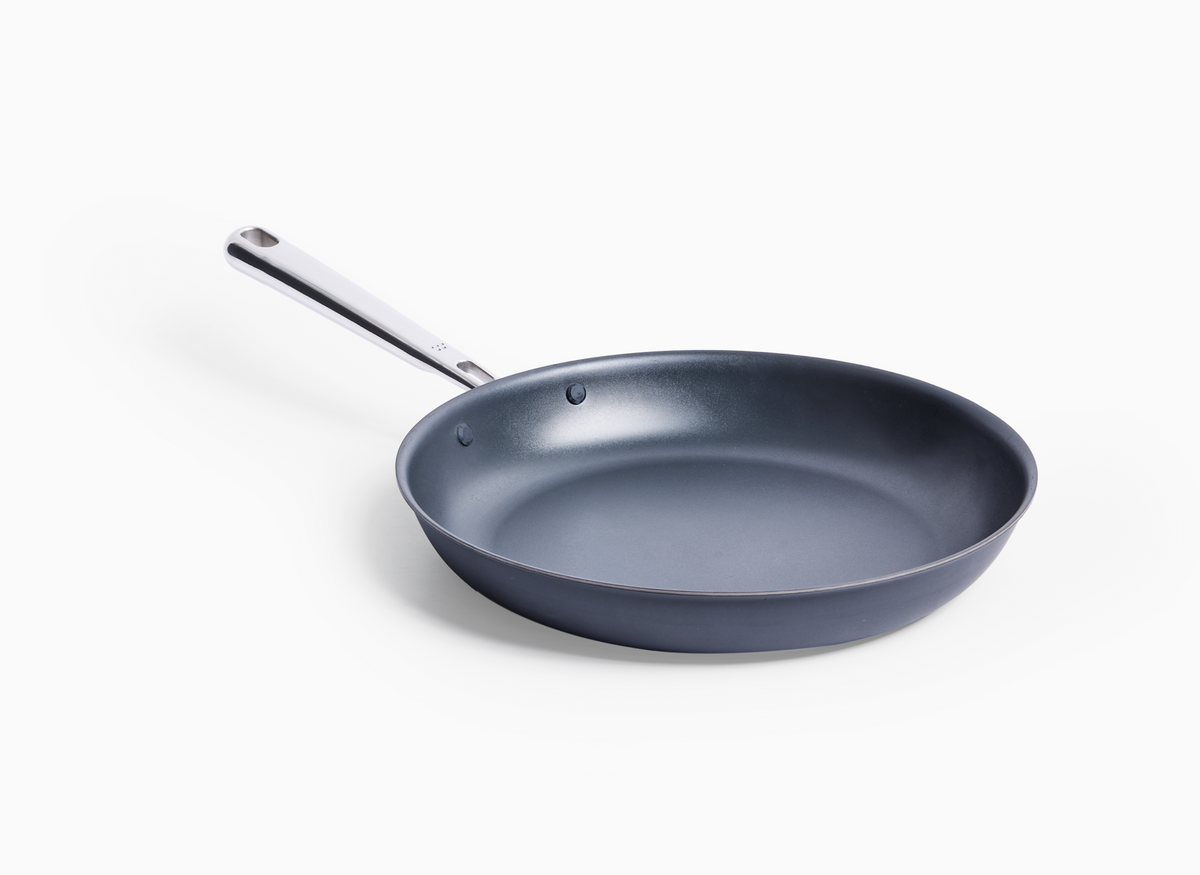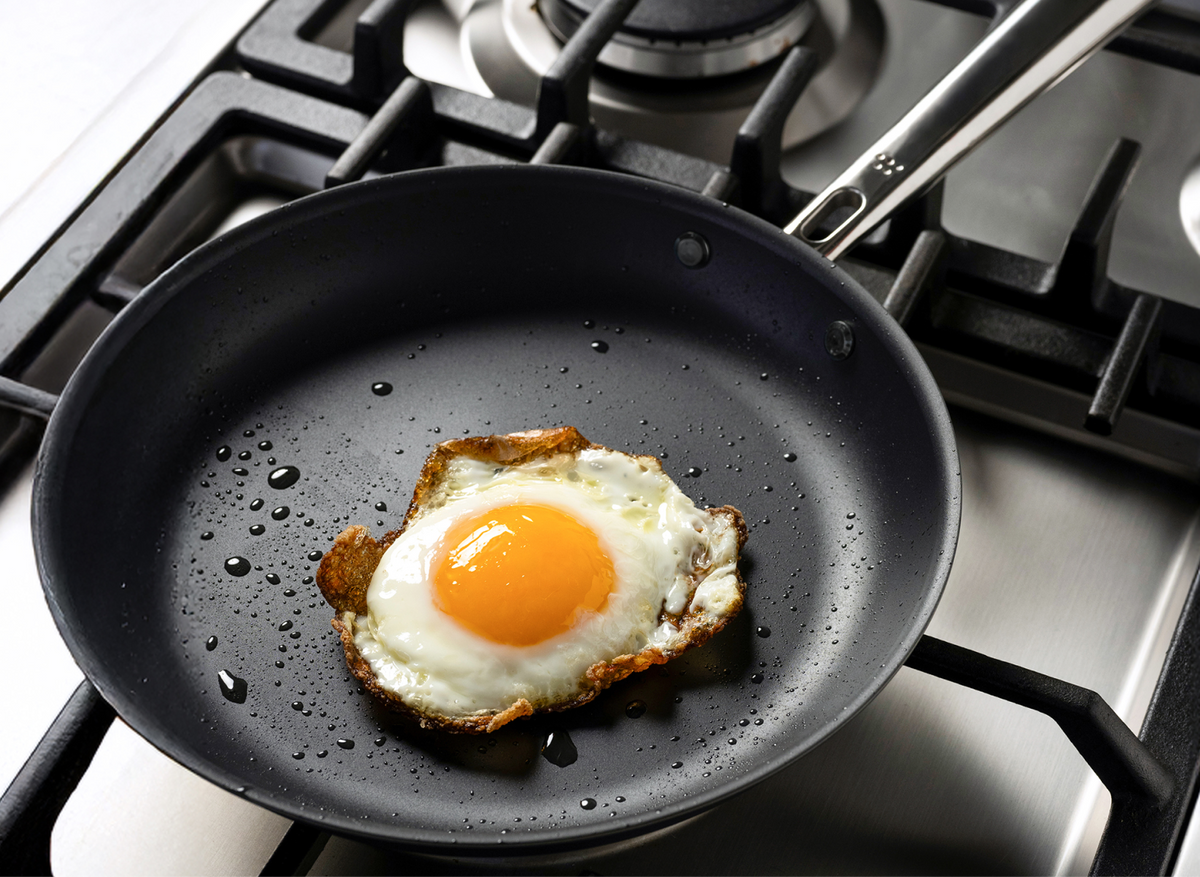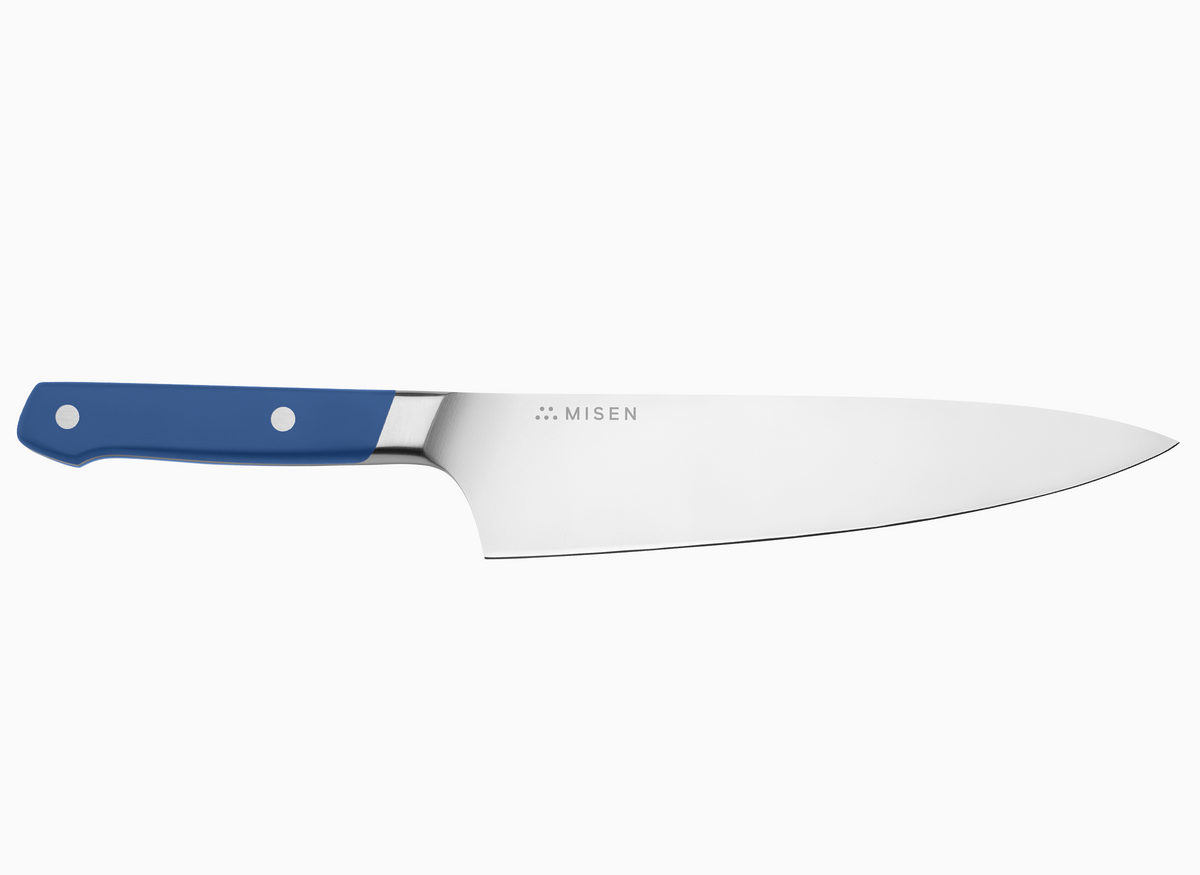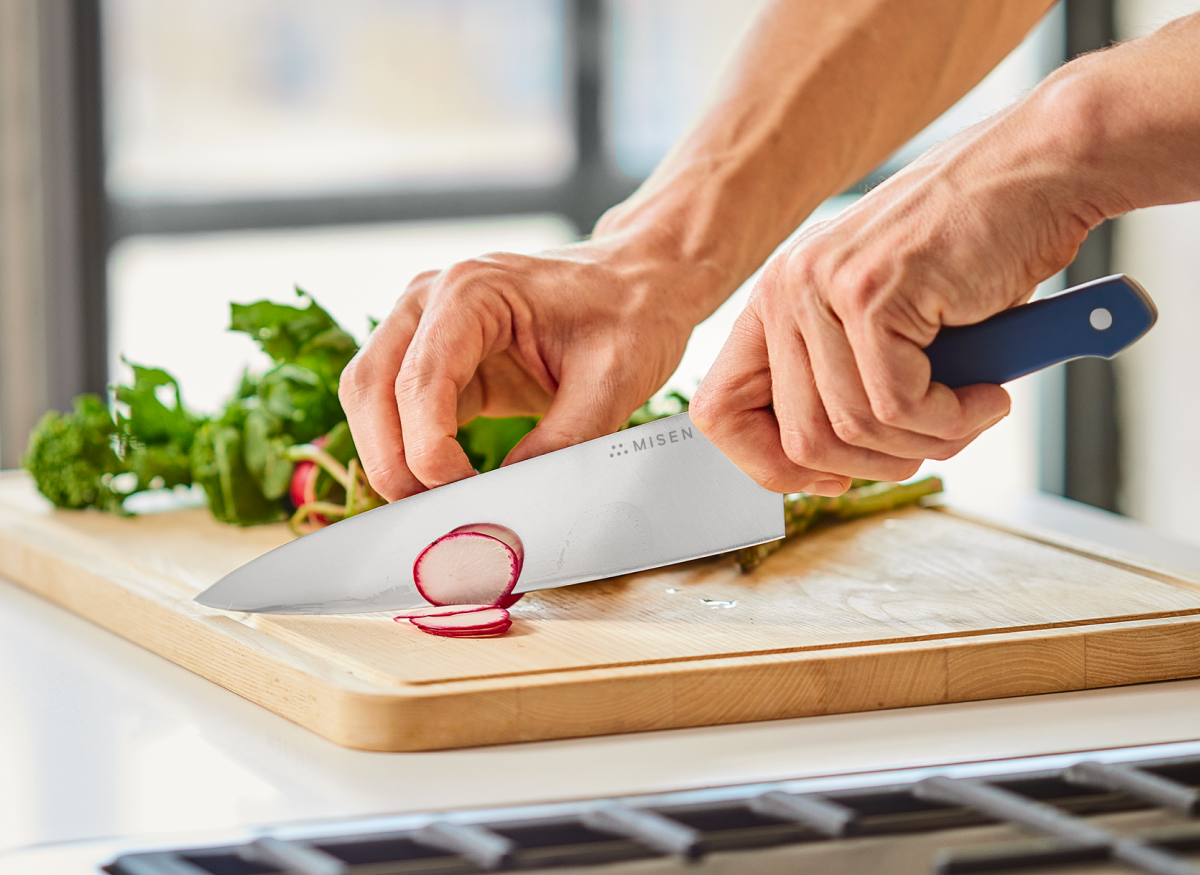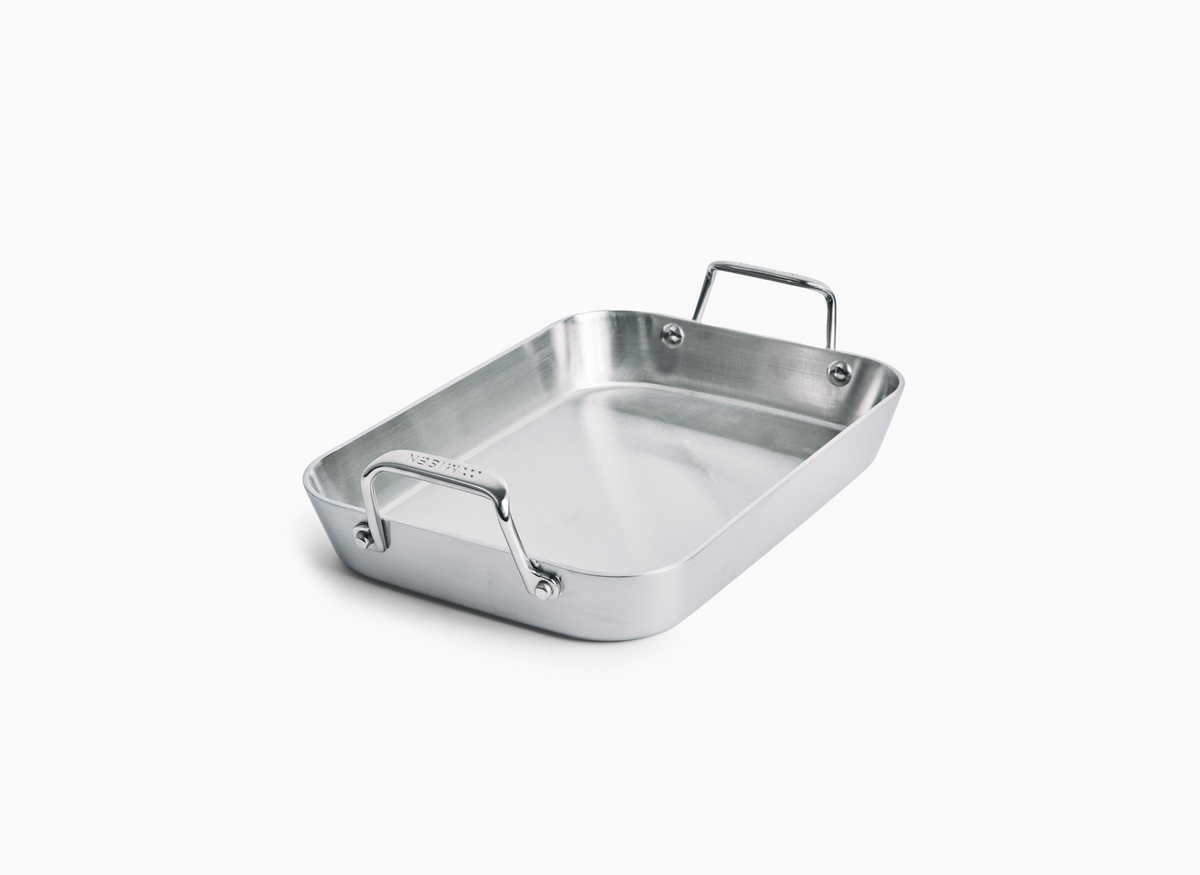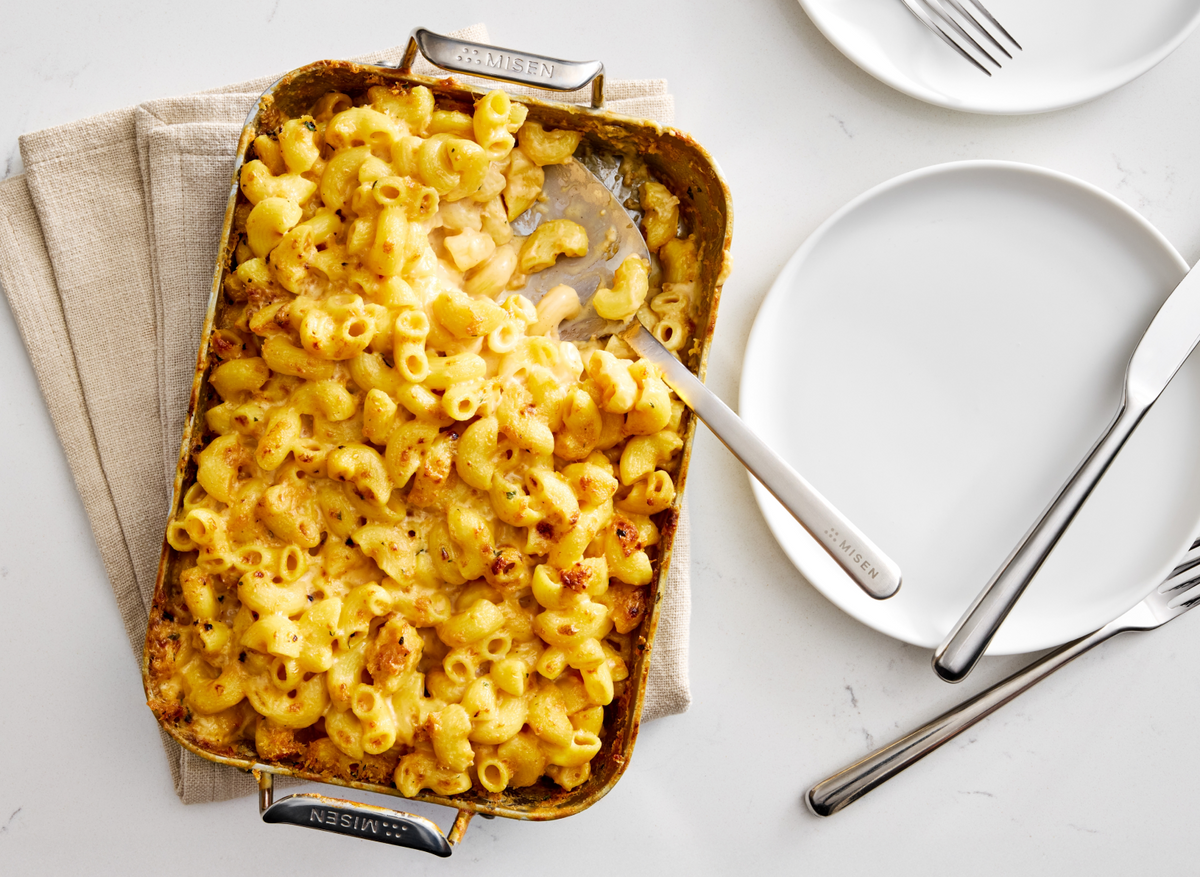Everything You Need to Know About Kadai: Types, Uses, and Care

Introduction
A kadai combines the versatility of a wok and Dutch oven with wide, sloped sides that prevent spillage while allowing easy stirring.
What is a Kadai?
A kadai (also called karahi) is a deep, circular cooking vessel that's become essential in kitchens worldwide. Think of it as a cross between a wok and a Dutch oven - with wide, sloped sides and a flat bottom that sits perfectly on modern stovetops [1]. What makes a kadai special? Its steep sides contain oil splatter during deep-frying while the unique shape lets you easily stir and toss ingredients without spillage [2]. Whether you're frying crispy pakoras, simmering a complex curry, or stir-frying vegetables, this one vessel handles it all [1]. The thick, heavy construction ensures even heating and prevents hot spots that can burn your food [1].
Historical Origins and Cultural Significance
The kadai has been central to South Asian cooking for centuries, evolving from the Sanskrit word 'kataha' (meaning cauldron) [3]. More than just cookware, these vessels became symbols of hospitality - massive 2-meter kadais would serve hundreds at weddings and festivals, often engraved to commemorate special occasions [4]. Originally designed for cooking over open flames with sturdy looped handles, the kadai shaped cooking techniques across India, Pakistan, Nepal, Sri Lanka, Bangladesh, and Afghanistan [1, 3]. Its influence even reached Caribbean cuisine through migration. The design proved so adaptable that cooks discovered creative uses beyond traditional cooking - like flipping a kadai upside down to make rumali rotis [5].
Why Kadai Remains Essential in Modern Kitchens
Why does the kadai remain a kitchen essential today? Its unique design solves real cooking challenges. The deep, curved shape prevents oil splatter during frying while the wide base provides ample cooking surface [6]. You'll find it equally effective for quick stir-fries and slow-simmered curries that need hours of gentle cooking [6]. Modern kadais have evolved to meet contemporary needs - from carbon steel versions that develop natural non-stick properties to options with induction-compatible bases [6]. Many home cooks discover that one quality kadai can replace multiple pans, making it a smart investment for kitchens with limited storage [7]. Built to last generations when properly cared for, these versatile vessels often become cherished family heirlooms passed down through the years [7].
Article Overview and Key Takeaways
This comprehensive guide helps you understand everything about kadai cookware - from choosing the right material to mastering traditional cooking techniques. You'll learn how different kadai types (explored in detail in our materials section) impact your cooking, what size works best for your household, and how to maintain your kadai for years of reliable use [8]. We'll cover the unique design features that set kadais apart from standard cookware, share popular recipes that showcase its versatility, and provide practical maintenance tips specific to each material type. Whether you're new to Indian cooking or looking to upgrade your current cookware, this guide gives you the knowledge to make an informed choice [8].
Types of Kadai: Materials and Their Properties
Cast iron kadais deliver authentic cooking experience with natural non-stick surfaces that improve with use, built to last generations.
Cast Iron Kadai: Traditional Excellence
Cast iron kadais deliver the authentic cooking experience that traditional Indian dishes demand. These workhorses excel at heat retention and even distribution, giving you perfectly cooked curries and that coveted char on your vegetables [9]. Once properly seasoned, cast iron develops its own natural non-stick surface - no synthetic coatings needed [10].
What makes cast iron special? It's built to last generations with proper care, making it a smart long-term investment [10]. The thick construction maintains steady temperatures whether you're deep-frying pakoras or slow-simmering dal [9]. Yes, cast iron needs specific care (skip the soap and keep it seasoned), but the payoff is huge - enhanced flavors and a cooking surface that actually improves with use [11]. For the full story on cast iron's health benefits, including how it naturally fortifies your food with iron, check out our detailed comparison in the health implications section below.
Stainless Steel and Triply Kadai: Modern Versatility
Stainless steel and triply kadais bring traditional cooking into modern kitchens. Triply construction is the star here - it sandwiches aluminum between stainless steel layers for lightning-fast, even heating without hot spots. These kadais handle everything from acidic tomato curries to tangy tamarind chutneys without reacting or adding metallic flavors to your food.
The real advantage? Universal compatibility. Whether you're cooking on gas, electric, or induction, these kadais perform consistently. They're lighter than cast iron and practically maintenance-free - just wash and go. Look for features like stay-cool handles, measurement markings, and rolled rims for drip-free pouring. While you won't get the seasoning benefits of cast iron, you'll appreciate the grab-and-go convenience for weeknight cooking.
Aluminum and Non-stick Kadai: Convenience Options
Aluminum and non-stick kadais prioritize convenience and accessibility. Aluminum heats up fast - perfect when you need dinner on the table quickly. Add a non-stick coating, and you've got a kadai that releases even the stickiest foods with minimal oil [12].
These are your go-to options for delicate dishes like fish curry or when you're just starting your Indian cooking journey. The lightweight design makes tossing and stirring effortless, though you'll need to baby that non-stick surface with silicone or wooden utensils. Keep in mind these won't last as long as their heavy-duty cousins, and the coating will eventually wear (we dive deeper into the health considerations of different materials in the choosing section). But for easy weeknight meals with minimal cleanup? They're hard to beat.
Specialty Kadai Materials: Copper, Brass, and Others
Copper and brass kadais represent traditional craftsmanship with specific cooking advantages. Copper responds instantly to temperature changes - turn down the heat and it cools immediately, giving you surgical precision for temperamental dishes [13]. This responsiveness makes copper perfect for delicate preparations where timing is everything.
Brass kadais combine copper's heat benefits with added durability. They hold heat longer than aluminum while still offering excellent control [14]. Both materials can enhance flavors, but here's the catch: they need tin coating (kalai) to safely handle acidic ingredients like tomatoes or tamarind [15].
Maintenance is part of the deal - copper needs regular polishing to stay beautiful, while brass requires careful coating upkeep [13]. If you're drawn to these traditional materials, understand they're an investment in both money and time. For everyday cooking, most home cooks find modern materials more practical. Want to explore how different materials work with various heat sources? The carbon steel pan offers traditional performance with modern convenience.
Choosing the Right Kadai for Your Needs
Cast iron naturally adds dietary iron to food while stainless steel and triply construction offer the safest, most worry-free cooking experience.
Health Implications of Different Kadai Materials
Different kadai materials affect both your cooking and your health in meaningful ways. Cast iron kadais naturally add small amounts of dietary iron to your food - a real benefit if you're looking to boost iron intake. The key is proper seasoning, which creates a natural non-stick surface while keeping the iron benefits intact.
For the safest, most worry-free cooking, stainless steel and triply construction are your best bets. They won't react with acidic ingredients like tomatoes or vinegar, keeping metallic tastes out of your food. If you're health-conscious and want versatility across different dishes, a quality kadai offers the perfect combination of durability and safety.
Size and Capacity Considerations
Kadai size directly impacts cooking efficiency and portion capacity. Common diameters range from 20-30cm, with specialty sizes available from 16-32cm to accommodate different serving needs. A 2-liter kadai suits small meals, while 5-7 liter capacities work better for families or batch cooking.
The vessel's depth affects its versatility - deeper kadais excel at deep frying and curries, while shallower ones work better for stir-frying and sautéing. When selecting size, think beyond just family size. Consider your typical cooking methods and kitchen storage space too.
Your kadai's diameter should give ingredients room to cook evenly without overcrowding. Too small, and you'll be cooking in batches. Too large, and you'll waste energy heating unused space. The depth needs to contain oil splatter during frying while still allowing easy stirring access.
Remember that larger kadais offer more versatility but come with trade-offs. They need more storage space and can be challenging to maneuver, especially in heavier materials like cast iron. For most home cooks, a medium 3-4 liter kadai hits the sweet spot between versatility and practicality.
Heat Source Compatibility (Gas, Induction, Electric)
Your kadai needs to match your cooktop for best results. Modern tri-ply stainless steel kadais are the most versatile - they work beautifully on gas, induction, and electric cooktops thanks to their magnetic base and flat bottom construction.
Traditional cast iron kadais shine on gas stoves where they can handle direct flames and distribute heat like champions. Want to use cast iron on induction? Look for ones with a flat magnetic base, or they simply won't heat up.
Each heat source has its strengths. Gas gives you instant temperature control and that satisfying visual feedback of flame height. Induction heats faster and more efficiently, perfect for busy weeknight cooking. Electric stoves need kadais with perfectly flat bottoms to make good contact with the heating element.
Hard-anodized kadais with induction-compatible bases offer great all-around performance. They bring traditional cooking properties to modern kitchens without limiting your cooktop options. Just remember - pure copper and aluminum kadais need special magnetic layers added to work on induction. If you're shopping for these materials, double-check the product details to avoid disappointment when you get home.
Budget, Quality, and Value Assessment
Kadai prices vary widely based on material and construction quality. Entry-level non-stick options start around ₹800, while premium versions can reach ₹3,000. But don't let price alone guide your decision - think about value over time.
Stainless steel kadais typically run ₹1,000-2,900 and offer excellent bang for your buck. They're durable, versatile, and won't need replacing every few years like some non-stick options might. Cast iron kadais cost more upfront but think of them as kitchen investments. With proper care, they'll outlive you and actually improve with age, developing better cooking properties over time.
Quality features do add to the price tag. Tri-ply construction costs more than single-layer but delivers noticeably better heat distribution - no more hot spots ruining your perfectly spiced curry. Useful extras like induction compatibility, comfortable handles, and well-fitting lids increase the price but pay dividends in daily cooking ease.
Here's the bottom line: a quality stainless steel or cast iron kadai might seem expensive initially, but when you divide that cost over decades of use, it's actually the budget-friendly choice. Better to invest once in quality than replace cheaper options every couple of years.
Kadai vs. Other Cookware: Design and Functionality
The kadai's high sloped walls and flat bottom provide stability on modern stovetops while containing splatter better than standard cookware.
Distinctive Design Elements of a Traditional Kadai
A traditional kadai features several distinctive design elements that set it apart from other cookware. The vessel has a round shape with high, sloped sides that curve inward and a flat bottom, making it stable on modern stovetops [27]. Unlike a wok's rounded base, the kadai's flat bottom provides better contact with heat sources while maintaining excellent heat distribution [27]. Most kadais include two looped handles for easy lifting, even when filled with food or oil [27]. The vessel's depth and steep sides serve multiple purposes - containing oil splatter during deep frying while allowing ingredients to be stirred and tossed efficiently [28]. Traditional kadais were crafted from thick, heavy materials like cast iron or wrought iron, which provided superior heat retention and even cooking temperatures [28]. Modern adaptations maintain these core design elements while incorporating contemporary materials like triply stainless steel, which sandwiches an aluminum core between steel layers for optimal heat distribution [27]. This evolution preserves the kadai's essential functionality while adding features like induction compatibility and improved durability [27].
Kadai vs. Wok: Comparing Asian Cooking Vessels
While kadais and woks share some visual similarities, their distinct designs serve different culinary purposes. A kadai features high, sloped sides with a flat base that sits directly on modern stovetops, along with two looped handles for stability when full. In contrast, woks have a rounded base with steeper sides and typically use a single long handle (sometimes with an additional short handle) optimized for tossing ingredients [29]. The materials and heat properties also differ significantly - kadais commonly use thicker construction in stainless steel, tri-ply, or cast iron, taking longer to heat but maintaining temperature longer. Woks, typically made from carbon steel, heat quickly and respond rapidly to temperature changes, making them ideal for high-heat, short-duration cooking [29]. These design differences align with their traditional uses - kadais excel at slow-cooking Indian dishes like curries and deep-frying snacks, while woks specialize in quick-cooking Asian techniques like stir-frying where ingredients need frequent tossing [29]. The flat base of a kadai provides stability for developing complex flavors in gravies and sauces, while a wok's sloped sides allow ingredients to be easily moved between hot and cool zones during rapid cooking [29].
Kadai vs. Standard Pans and Pots
While kadais and standard pots share some basic functions, their unique design elements serve distinct culinary purposes. Unlike regular pots with straight sides, kadais feature high, sloped walls that curve inward, making them ideal for deep-frying and stirring without spillage [30]. Standard pots excel at boiling and simmering but lack the kadai's versatility for techniques like stir-frying and deep-frying. The kadai's flat bottom provides stability on modern stovetops while maintaining superior heat distribution compared to standard cookware [31]. When it comes to materials, kadais offer specialized options like traditional cast iron that develops natural non-stick properties through seasoning - a feature rarely found in standard pots [32]. The kadai's distinctive shape allows for better ingredient incorporation during cooking, while its thick construction provides heat retention that surpasses typical pans, making it particularly suited for developing complex flavors in Indian dishes [30]. For tasks like deep-frying or preparing curries, the kadai's curved sides contain oil splatter more effectively than straight-sided pots while allowing easy access for stirring and monitoring food [31].
Unique Advantages of Cooking with a Kadai
The kadai's unique design offers distinct advantages over conventional cookware. Its deep, curved walls excel at containing oil splatter during deep frying while allowing efficient stirring and tossing of ingredients [33]. The vessel's superior heat retention and even distribution capabilities make it ideal for developing complex flavors in curries and stews [34]. When cooking with a kadai, its high, sloped sides prevent food from spilling over during vigorous stirring - a common issue with standard pans [34]. The kadai's spherical shape holds more oil than typical pans, enabling better deep frying results for traditional snacks like pakoras and samosas [34]. For dishes requiring constant stirring or ingredient incorporation, the kadai's wide surface area combined with curved walls creates an optimal cooking environment that standard pots cannot match [33]. The vessel's traditional design has proven so effective that modern manufacturers maintain these core elements while adding contemporary features like induction compatibility and improved durability [33].
Cooking with a Kadai: Techniques and Popular Dishes
Master tadka tempering in hot ghee and bhunao stirring techniques to create the authentic flavors traditional Indian cooking demands.
Essential Kadai Cooking Techniques
Mastering kadai cooking starts with tadka (tempering), where spices bloom in hot ghee to develop deep flavors. Heat ghee until nearly smoking, reduce heat, then add spices in sequence: alliums first, followed by whole spices, herbs, and finally powdered spices. The kadai's steep sides excel at containing oil splatter during this process while enabling efficient stirring.
Another essential technique is bhunao, which involves constant stirring over medium-high heat to create a thick, spiced paste that forms the base of many dishes. This method requires repeatedly deglazing with small amounts of liquid while browning ingredients to develop rich, complex flavors. The kadai's unique shape allows for dum cooking, where food slowly steams in its own moisture under low heat, letting spices and herbs fully release their flavors into the dish.
For deep-frying, the traditional Indian method uses fresh oil or ghee in small batches, with just enough to submerge the food - typically 1-2 inches. The vessel's curved design provides superior heat distribution, making it ideal for achieving the coveted charred flavor when cooking at high temperatures, similar to wok hei in Asian cuisine.
Famous Kadai Dishes: Beyond Kadai Paneer and Chicken
Kadai dishes extend far beyond the popular kadai paneer and chicken variations. The vessel's unique design creates distinct flavors in dishes like kadai mushroom, which mimics the taste of chicken through a rich tomato-based gravy enhanced with garam masala, turmeric, and dry coriander powder.
Traditional kadai chicken represents a cornerstone of North Indian cuisine, featuring chicken slow-cooked with tomatoes and spices in an iron kadai that imparts unique flavors. The authentic version differs from modern restaurant interpretations - traditional preparations avoid onions and bell peppers, instead relying on ghee or mustard oil, abundant tomatoes, and coarsely crushed whole spices. Modern adaptations incorporate onions to balance tomato acidity and bell peppers for smoky notes.
Kadai vegetables offer another versatile option, combining potatoes, cauliflower, carrots, green beans, and bell peppers in a subtle spice blend with tomato-onion gravy. The kadai's effectiveness in developing complex flavors has made these dishes staples at celebrations and restaurants, where they're traditionally served in kadai-shaped bowls. The preparation involves a special kadai masala blend of coarsely crushed coriander seeds, fennel seeds, dried red chilies, and black pepper that distinguishes these dishes from other Indian preparations.
Regional Variations in Kadai Cooking
Kadai cooking techniques vary significantly across India's regions, reflecting local ingredients and cultural preferences. In South India's coastal areas, kadai dishes emphasize seafood preparations using coconut-based gravies and fresh curry leaves, with the vessel's curved sides perfectly containing splatter during high-heat cooking. Bengali cuisine adapts kadai cooking by incorporating pungent mustard oil, which adds a distinctive flavor when bloomed with whole spices in the vessel's wide base.
The Lucknow region's signature dum pukht technique transforms kadai cooking by slow-cooking ingredients in a sealed vessel, allowing complex flavors to develop through steam retention. Each region's approach showcases unique spice combinations - South Indian preparations feature curry leaves and coconut, while Bengali dishes emphasize the five-spice mixture called panch phoron.
The kadai's versatility accommodates these regional variations through its ability to handle different cooking methods, from the vigorous stirring needed for coastal fish curries to the gentle simmering required for Lucknowi dum preparations. Traditional cooking methods like bhuna (sautéing with periodic water addition) and dum (sealed slow-cooking) take on distinct regional characteristics while maintaining the core benefits of the kadai's curved design.
Contemporary Applications and Recipe Ideas
Modern kadai cooking embraces fusion techniques while maintaining traditional authenticity. Pakistani-style chicken karahi demonstrates this evolution, using minimal oil compared to restaurant versions while preserving the dish's signature tomato-based gravy and aromatic finishing of green chilies, cilantro, and ginger.
The kadai's versatility extends to creative fusion dishes that blend Indian flavors with global cuisines. Innovative recipes include masala pasta cooked with Indian spices in a tangy tomato sauce, chaat nachos topped with chickpeas and chutneys, and tandoori quesadillas filled with spiced paneer.
These contemporary applications showcase how the kadai's unique design - with its steep sides and even heat distribution - adapts seamlessly to cross-cultural cooking techniques while maintaining the depth of flavor traditional to Indian cuisine. The vessel's ability to handle both high-heat searing and gentle simmering makes it ideal for experimenting with fusion recipes that combine cooking methods from different culinary traditions. Whether you're using a traditional iron kadai or a modern stainless steel version, the fundamental cooking principles remain the same while offering versatility for creative culinary exploration.
Care, Maintenance, and Longevity of Your Kadai
Proper seasoning and maintenance transforms your kadai into a kitchen heirloom that improves with age and use.
Proper Cleaning Methods by Material Type
Different kadai materials need specific cleaning methods - here's what works best for each type discussed in our materials section above. For stainless steel, simply wash with warm soapy water and a soft sponge [43]. Cast iron requires more care: never soak it or put it in the dishwasher. Instead, clean immediately after use with hot water and a stiff brush - skip the soap to protect the seasoning [44]. For stuck-on food, make a paste with kosher salt and warm water, then gently scrub [44].
Non-stick surfaces need gentle treatment with soft sponges and mild soap [43]. If you're dealing with aluminum discoloration, a baking soda paste works wonders - let it sit briefly, then wipe clean [45]. Copper and brass kadais tarnish over time, but a simple paste of equal parts vinegar, salt, and flour restores their shine. Apply for 30 seconds, then polish in circles [45].
Seasoning and Maintaining Different Kadai Types
Cast iron kadais need proper seasoning to perform their best - a process similar to seasoning a carbon steel pan. Start by washing with hot water, drying completely, then coating all surfaces (including handles) with a thin layer of oil. Heat on medium for 10-15 minutes until the oil polymerizes into a protective layer [46]. After each use, apply another light oil coating before storing.
Stainless steel doesn't need traditional seasoning, but a light oil coating before first use helps prevent sticking. Remember: soap strips cast iron's seasoning, so stick to hot water and a stiff brush for cleaning [46]. See black residue? That's normal - just scrub gently with baking soda paste to remove buildup without harming the seasoning [46]. This natural non-stick surface prevents rust and actually improves with use, making your kadai better for traditional cooking over time.
Extending Your Kadai's Lifespan: Do's and Don'ts
Want your kadai to last generations? Follow these simple rules based on the material type you chose from our guide above.
Cast Iron Do's:
- Dry thoroughly after washing
- Apply thin oil coating before storing
- Heat gradually to prevent cracking
- Clean immediately after use with hot water and brush
Cast Iron Don'ts:
- Never soak in water
- Skip harsh detergents
- Avoid acidic foods in unseasoned kadais
- Don't store food in them overnight
For all kadais, match your utensils to your surface - silicone or wood for non-stick, metal for seasoned cast iron [47]. If rust appears, don't panic - just clean and re-season rather than tossing it. Keep things eco-friendly with salt scrubs for stubborn spots and plant-based oils for seasoning. With regular care, your kadai becomes a kitchen heirloom that actually improves with age [47].
- A kadai is a versatile deep cooking vessel that combines features of a wok and Dutch oven, essential for authentic Indian cooking
- Cast iron kadais offer traditional excellence with natural non-stick properties, while stainless steel provides modern convenience
- Choose kadai size based on family needs - 2 liters for small meals, 5-7 liters for families or batch cooking
- Different materials suit different cooktops - triply stainless steel works universally while cast iron excels on gas stoves
- Master essential techniques like tadka (tempering) and bhunao (stirring) to develop authentic flavors
- Proper maintenance varies by material - cast iron needs seasoning and no soap, stainless steel is dishwasher-safe
- Invest in quality for long-term value - a well-maintained kadai becomes a kitchen heirloom lasting generations
- https://www.vinodsteel.com/blogs/blog/what-is-the-use-of-kadai-in-the-kitchen?srsltid=AfmBOoohJNpPHBVilyOwx-HC-QpILcNtdQgvGXzzbPAtlSxyyMJMt3tE
- https://karahi-shop.co.uk/indian-cooking/20-must-have-indian-cooking-utensils-for-your-kitchen/
- https://en.wikipedia.org/wiki/Karahi
- https://www.kadai.co.uk/kadai-world/blog/the-kadai-story/?srsltid=AfmBOor4CD9ksy6pgWmyUH5BWEf1XrtJD4fPaggRAp0Lp7HMqgStgzYf
- https://brodees.com/the-art-and-science-of-cooking-with-the-kadai/
- https://vinodcookware.com/blogs/articles/why-the-indian-kitchen-is-incomplete-without-a-kadai?srsltid=AfmBOooPj19Dp2vMXYz2nGgy943UiSRdLC2N2Biyw6CsSuXEg0Pa_YIE
- https://www.potsandpans.in/blogs/articles/the-benefits-of-cooking-with-a-traditional-kadai-in-2025?srsltid=AfmBOop6-FBJDEb9aPTL4JTo0-ZX_-O2KVQvvhORN3uWwgKTlFudIpBR
- https://sonucookware.com/blogs/news/how-to-choose-a-kadai-for-cooking
- https://vinodcookware.com/blogs/articles/revisit-traditions-cook-in-iron-kadai?srsltid=AfmBOorOrmt_DR9fP1D_PLIRHNaDT8zEyRskTXS8d-hx0FQ201OO_VOg
- https://sonucookware.com/blogs/news/iron-kadai-benefits
- https://www.potsandpans.in/blogs/articles/traditional-cast-iron-kadai-cooking-benefits-recipes-pots-and-pans-india?srsltid=AfmBOooRWWfhfBzxoZXf5W2HhzYDJU871l9eATzkqnqqCKSwZRCTsDE9
- https://chefstoys.com/blogs/blog/aluminum-and-stainless-vs-nonstick-cookware
- https://stahlkitchens.com/blogs/news/which-metals-are-best-for-cooking?srsltid=AfmBOop5MgPlmwHfXjp3gdgLY8qI725d_98oARZVaiekCjuw5v7ehou-
- https://www.kalasians.com/blogs/news/7-benefits-of-cooking-in-brass-utensils-brass-kadhai?srsltid=AfmBOor3aIgMvXUBJtCc79nkZLDX2Skh4UorrRE6ViHI4hF5TonN6c0V
- https://artarium.com/blogs/news/brass-vs-copper-utensils?srsltid=AfmBOorlz3MXJPGBIGA_mRIf0QJbqkKwgZ1FG2GgI0uzICeQBbM2yzyH
- https://stahlkitchens.com/blogs/news/which-kadai-is-good-for-health?srsltid=AfmBOopIYcu8_1XCL_GgiQdK6zksImjpHuCweJ1EhQCfxGk6yTCF8Z3W
- https://www.everydayhealth.com/healthy-living/are-your-pots-and-pans-safe-how-to-choose-non-toxic-cookware/
- https://pmc.ncbi.nlm.nih.gov/articles/PMC10386729/
- https://www.potsandpans.in/blogs/articles/the-essential-guide-to-kadai-sizes-for-everyday-cooking-in-2025?srsltid=AfmBOoqjHPHLOF1KdoiCBldTmgk8YE9cSXuJPVXSIKbwvpj1mHYb_Ca8
- https://shop.ttkprestige.com/blog/post/buying-guides/how-to-choose-the-perfect-kadai?srsltid=AfmBOopd2vuSuwooq7SxN5Y_Lc1EPWfHTxDRCSJRCTj1VGs9MkK6bR71
- https://www.amazon.com/Made-Cookware-Stainless-Professional-Compatible/dp/B0CQ48S5FT
- https://www.mahaakitchenware.com/blogs/news/gas-vs-induction-vs-electric-choosing-the-right-cookware-compatibility?srsltid=AfmBOorZT1by_ABFX89j4lMqLeWtWLZ98ZPUa8-_AkIycZqb-YcdyIOG
- https://shop.ttkprestige.com/prestige-hard-anodised-plus-gas-and-induction-compatible-kadai-with-glass-lid-24-cm-black36864.html?srsltid=AfmBOoru53GRciLzzhmJPMKYf6REq0jR58HZaC9hQhx_WrerLTTTeqBO
- https://shop.ttkprestige.com/blog/post/buying-guides/how-to-choose-the-perfect-kadai?srsltid=AfmBOooy8pAVvbM2BU2q4lSIlarjqa0nN8Yc1CHOYy_oKc5qaxuY8VqF
- https://stahlkitchens.com/blogs/news/which-kadai-is-good-for-health?srsltid=AfmBOooLlABVHGmdv1tXsLZ0QtbPE3z2NGeeQ8eu_NsYpNDkuPJNgyWq
- https://www.theindusvalley.in/collections/kadai?srsltid=AfmBOoqRUAWk_cx-wLjUCa1DZOu9M_vt0UqCvAQEbWL9GmnqizFXYpi1
- https://vinodcookware.com/blogs/articles/kadai-vs-wok-understanding-the-differences?srsltid=AfmBOorfZPyras-PfQ4rjpoogvPTVS6g8alTyLYa-0M7mrDdtmktQXwL
- https://www.wakefit.co/blog/iron-kadai-vs-steel-kadai-find-the-best-fit-for-your-kitchen-needs/?srsltid=AfmBOoogLiuVmFlGSA8a5D5rILCsOe90mdeBNPbzAxRLAjfjm8eqzYZu
- https://vinodcookware.com/blogs/articles/kadai-vs-wok-understanding-the-differences?srsltid=AfmBOopaGTlpMa1a2kcfWd1Jrf1PL1D_clYzDe8WJ2KT1KZVHK9CXok0
- https://vinodcookware.com/blogs/articles/kadai-vs-wok-understanding-the-differences?srsltid=AfmBOooXimnWmJlH2va38yQEm2bxlq0VsJrn8wohibKeKPoxivW8eraS
- https://stahlkitchens.com/blogs/news/types-of-cookware?srsltid=AfmBOoqjrpkexFXDZumcAaITOtT6gsd5o23mtYoTk8xh09YXoboNkh_b
- https://shop.ttkprestige.com/blog/post/buying-guides/how-to-choose-the-perfect-kadai?srsltid=AfmBOopytnVtozsBsogcqixTO4f9O9TWuF2HBiNZQJsRHd4tw8NPh3Tn
- https://macclite.com/blogs/health-life-macclite/what-is-karahi-or-kadahi-exploring-its-best-use-in-2024-non-stick?srsltid=AfmBOopPvg0O9SFzxquWbM9e0qwZ-k1fixuHrgKL0hruvX_dvQxytpw5
- https://www.quora.com/How-is-a-kadai-a-better-option-than-a-frying-pan
- https://blog.pureindianfoods.com/basic-techniques-of-indian-cooking/
- https://www.slurrp.com/article/5-quick-and-easy-indian-kadhai-dishes-to-try-1709806339999
- https://www.indianhealthyrecipes.com/kadai-chicken/
- https://flavorquotient.com/2016/08/restaurant-style-kadai-chicken-authentic-chicken-karahi-recipe/
- https://www.haldinyc.com/indian-cooking-techniques-demystified.html
- https://spiceitupp.com/indian-cooking-methods-you-need-to-know/
- https://www.teaforturmeric.com/chicken-karahi/
- https://manjulaskitchen.com/category/recipes/fusion/
- https://www.whirlpool.com/blog/kitchen/how-to-clean-pots-and-pans.html
- https://www.nytimes.com/wirecutter/guides/how-to-clean-cast-iron-skillet/
- https://www.maytag.com/blog/kitchen/how-to-clean-pots-and-pans.html
- https://www.tredyfoods.com/en-us/blogs/products/how-to-maintain-and-clean-cast-iron-cookware?srsltid=AfmBOoq2ihwxFHYCOOsyrQJN3sN7SfCOAy9ITA4TyduozWLiXTSxR3a6
- https://www.potsandpans.in/blogs/articles/how-to-maintain-and-season-your-cast-iron-kadai-in-2025?srsltid=AfmBOoq8Xg-x58CtS08TbsnovKNvIuxkDaaVLMlaqNrCI13AgaPQfmAd
- https://www.potsandpans.in/blogs/articles/steel-ki-kadai-uses-features-and-benefits?srsltid=AfmBOooUtVazCh_JNcUED06xxywaJEIr-DympeyZCx70flbV1FCxUaMO
- https://www.vinodsteel.com/en-us/blogs/blog/healthy-cooking-the-pros-and-cons-of-triply-and-nonstick-kadai?srsltid=AfmBOor5BmMqRzpbj6Y97w-6xTvWMY2q5kVz7tKxghBg58zzJ9vy6VKv
- https://shop.ttkprestige.com/blog/post/buying-guides/how-to-choose-the-perfect-kadai?srsltid=AfmBOopH4SicYN096pk5VSnz1Bf393sQVSKnD4JRtFj1Kgv8QcrCuWBW
- https://shop.ttkprestige.com/blog/post/buying-guides/how-to-choose-the-perfect-kadai?srsltid=AfmBOoqydMstFA5FDz0yZt3hrOcleWEIvx1sxL8XLSx8truzw99t_jjm
- https://www.wakefit.co/blog/the-ultimate-guide-to-choosing-the-perfect-kadai-for-all-your-cooking-needs/?srsltid=AfmBOooYv1L_yhqSEL7flFkEPC_5va4jOOt9wgbYqrByz5NCndSZYPh8
- https://www.theindusvalley.in/collections/kadai?srsltid=AfmBOorVYlFoHOoZ7isd-JjQeiSH4bPid23sirEO4aTwfqDtKic6VQC5
- https://www.quora.com/Which-stainless-steel-Kadai-is-the-best
- https://www.amazon.com/PROUDLY-INDIA-Cast-Iron-Kadai/dp/B0DDL6QR6V
- https://www.maharanikitchenware.com/blogs/news/revisit-traditions-cook-in-iron-kadai
